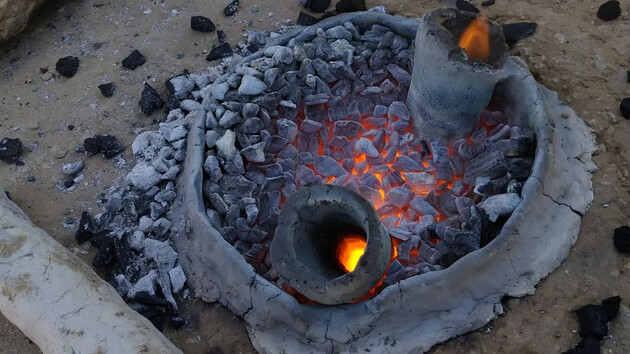Probably, people used all the plants suitable for making charcoal.

Scientists conducted a study that allowed them to determine why the famous copper mines in the Israeli Negev desert were abandoned. They laid the foundation for the appearance of the legend about the famous gold mines of King Solomon, reports Live science.
According to the researchers, people left the mines because they used all the plants that were suitable for the production of charcoal needed for smelting . In the course of research, scientists studied fragments of charcoal from ancient furnaces in the Timna valley near Eilat, where from the XI to the IX centuries BC. the copper industry flourished.
Read also: Archaeologist believes that he is close to discovering the mummy of Neferita
The researchers found that the quality of the wood used to make charcoal deteriorated during the 250 years of operation of the mines and smelters, as people used all the nearby sea buckthorn and acacia trees, and began to use palm trunks.
By about 850 B.C. of our era, the copper mines were abandoned, and the lifeless desert that remained around was not used for a millennium.
“Over time, they used less and less wood, which they knew from the beginning was better. And it seems that they collected firewood further and further,” said the lead author of the study, Mark Kavanagh, an archaeobotanist and doctoral student at Tel Aviv University.
According to him, the Timna Valley was one of the first regions of the Earth, in which made copper. This region is a continuation of the Great African Rift, so many minerals are located near the surface.
Some of the earliest evidence of copper ore smelting in the Timna Valley dates back to about 7,500 years ago. The secret of alloying tin with copper will be revealed only 1,000 years later.
During the new study, Kavan and his colleagues studied the remains of wood from a much later period: about 3,000 years ago. Then the copper industry in Timna was at the peak of its development.
Wood was first burned in underground pits with a lot of air to get charcoal. Scientists studied the slag left over from smelting to determine what types of wood were used to make coal. As a result, they found out that in the beginning, white buckthorn and acacia were used, but later people switched to using wood of lower quality.
Related video
Then the mines were abandoned. According to Kavanagh, this could have happened because it was becoming more and more difficult to get wood. Copper production in this region did not resume for a millennium, until the Romans began importing high-quality wood.



